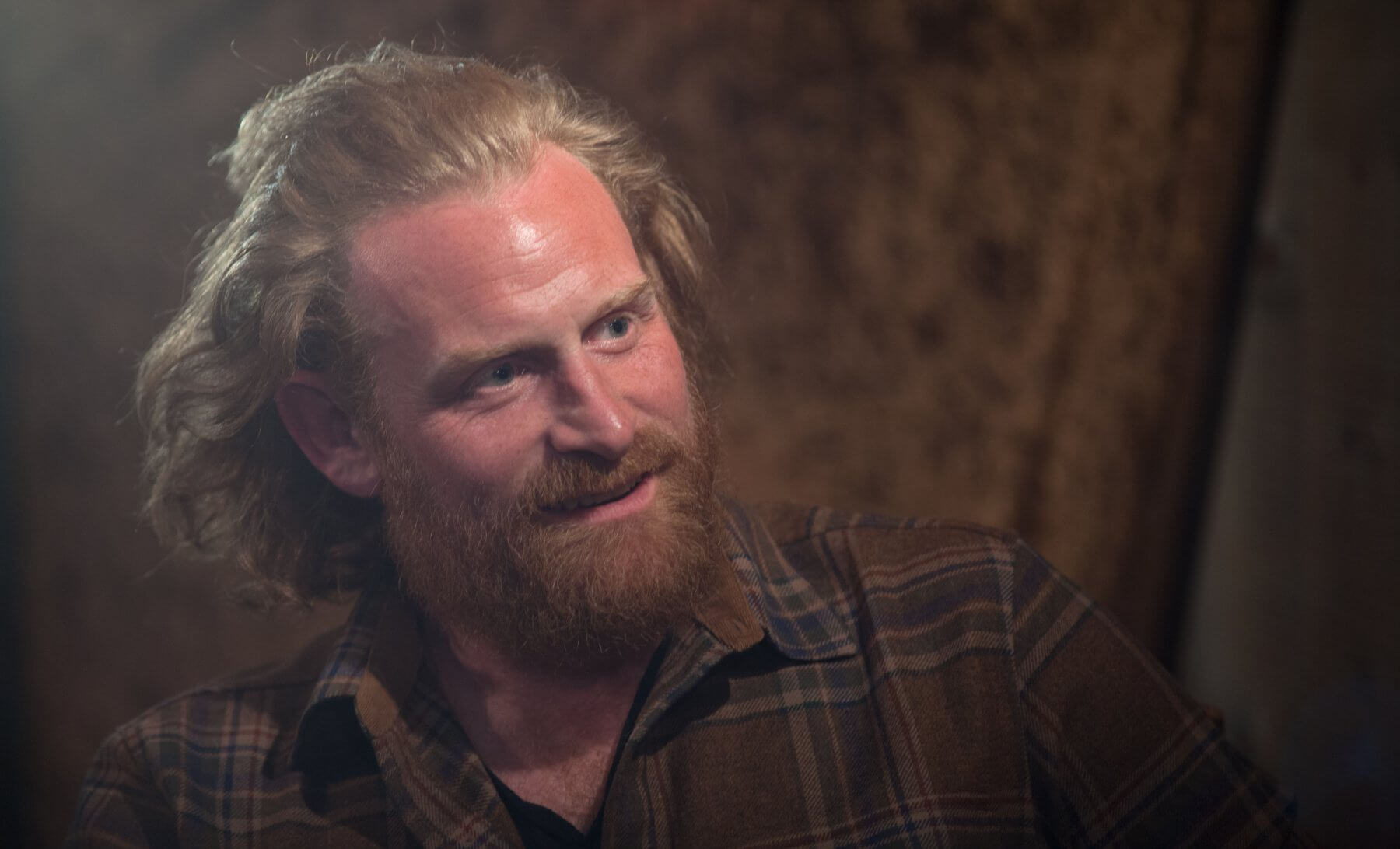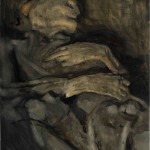News and Articles › Cave of Apelles
Kitsch is deceptive. It has many different levels, and some of them are high enough to be dangerous to the naive seeker of true light.
— Clement Greenberg, art critic
Top list
View the entire list
What does it take to convince the audience — heartfelt inspiration or calculated deception? Asks Jan-Ove Tuv in his opening statement in the Cave of Apelles.
Seated next to him in an old viking chair, is the Hollywood actor Kristofer Hivju, petting a purring cat as if he was Marlon Brando himself.
– When you look at me now, I appear sympathetic because I have this animal in my lap. Because I’m nice to the animal, you perceive me as more sympathetic than I would be if I had a gun in my hand, says Hivju.
The cat is fake, but the effect it creates on the audience is real.
All storytelling is about human emotions. As an actor, one needs to have insight into the human emotional life.
Would you like to get premium access?
Become a patron
The Actor is the Paint
While painters have tools to create something, actors have only themselves.
– I am the instrument, so I have to control the instrument, and I have to fool my nature to believe that I’m someone else, explains Hivju.
He calls acting a school of empathy, as one has to respond and react as someone else with a different psychology and different emotional aspects.
– The funny thing about being an actor is that I am a human who pretends that I am a human, and the result should be that I am very human.
For years his main objective as an actor was just to imitate the person as well as possible. When he fully grasped how every character had a function in the story, his attitude changed. He compares it to painting:
– As the actor, you are the paint. In a story there are different colors and different roles. What changed me as an actor is that when I understood my function — my color of the paint that I’m supposed to paint into the movie or into the play. Then, I became a storyteller.
Tuv clarifies and states that it is not just about saying the words in an effective manner, but also about understanding the totality of the whole story and how that relates to the action that plays out.
– When I understood the function of why my role is in the story, it became much more interesting and fun, and I think I could help the story to be told as well as possible, says Hivju.
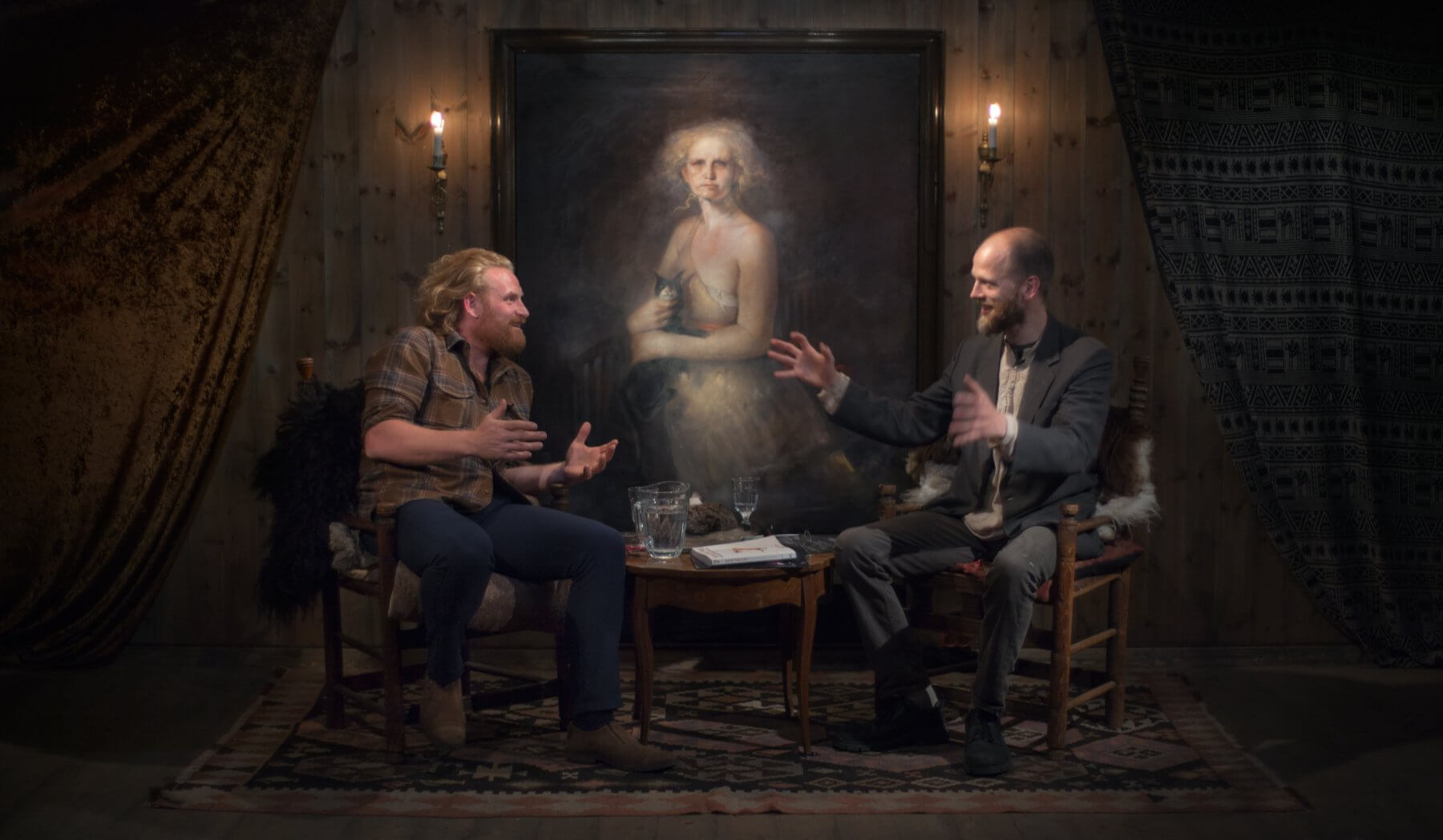
Kristofer Hivju and Jan-Ove Tuv for the 19th episode of The Cave of Apelles.
The Stanislavsky method
The Stanislavsky method was invented by the man who is often called “The godfather of modern acting”. Hivju states that there have been indefinitely many acting styles throughout the years, as people have been acting since the beginning of time. The inclination of children acting out their parts as mother and father being an example of this.
– What Stanislavsky wanted to find out was: What makes an actor as close to human reality as possible? How can we make it more realistic, more naturalistic, and more true? Instead of exposing, like showing feelings or actions, his point was “I want the actor to live through it. If he’s crying, I want him to actually cry,” Hivju explains.
He describes how Stanislavsky traveled throughout Russia to various theaters, observing the best actors in the country. His conclusion: All the best actors had something in common. There was a perspective in their actions, they had an objective, they wanted something. They were not only saying the lines. There was something under the lines, something behind the lines.
– I hear the lines, I see something else, and understand the third thing. Suddenly, it becomes much more like life, and much more like how we act in real life, says Hivju.
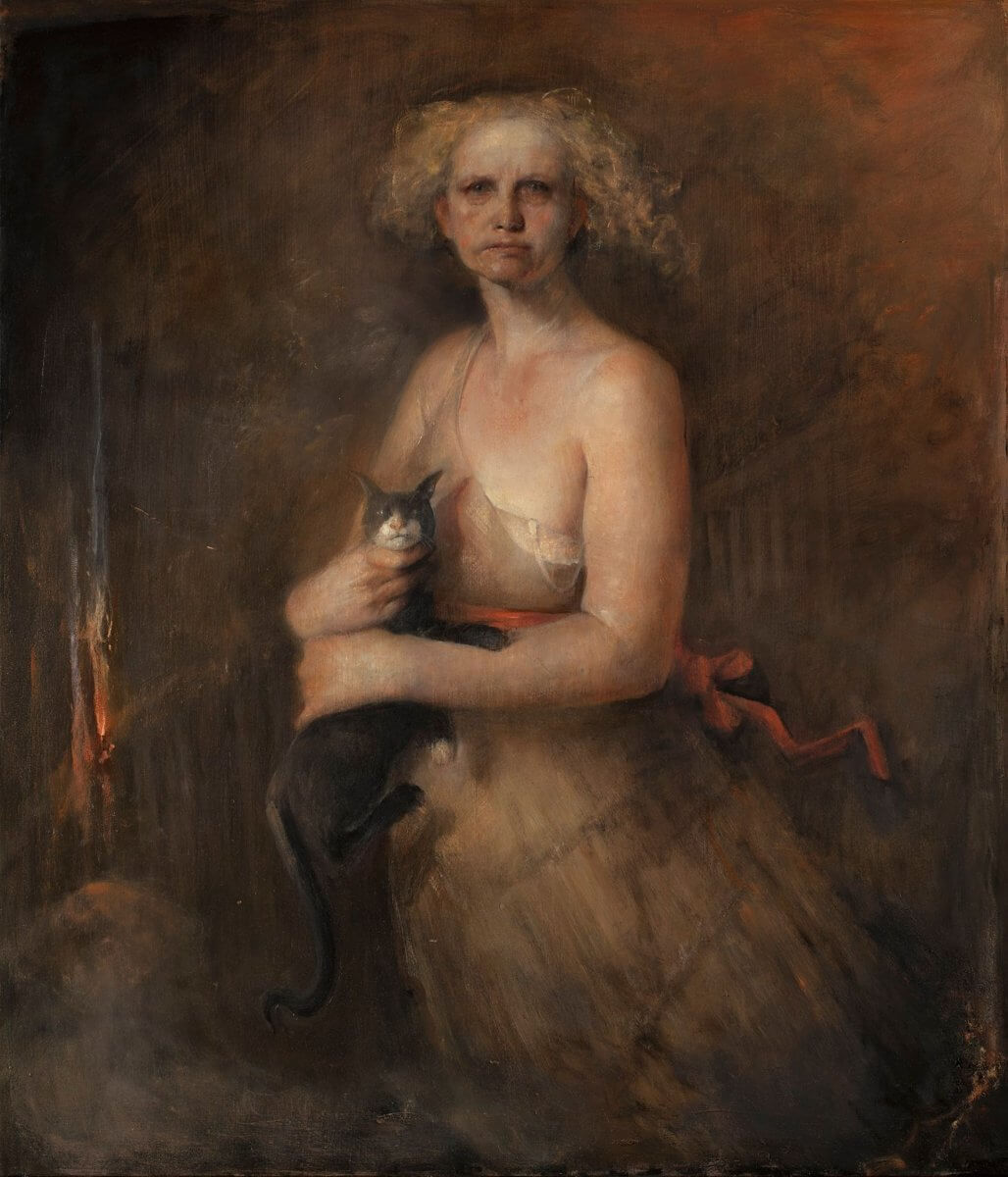
“Save the Cat” by Odd Nerdrum
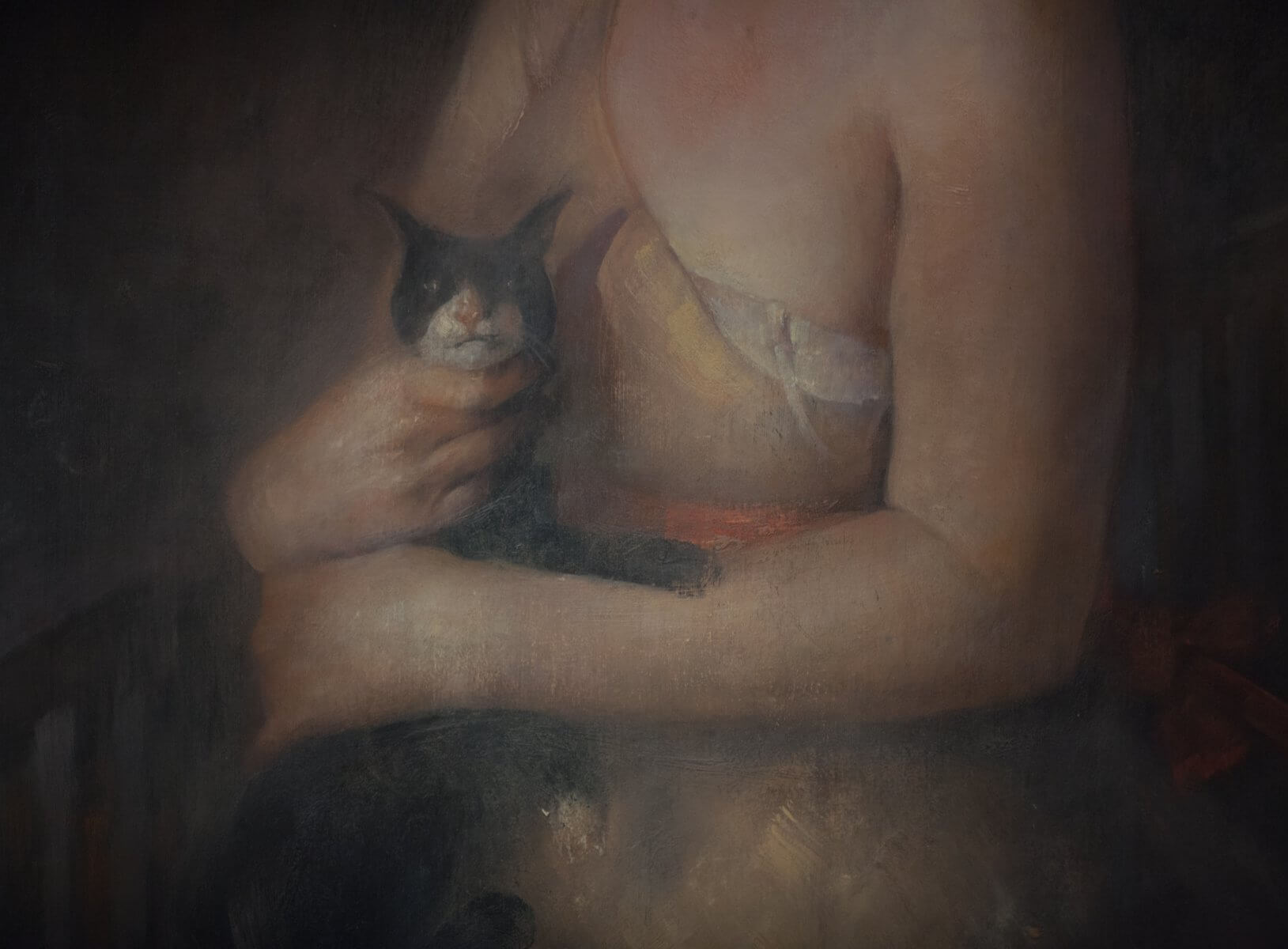
Detail from “Save the Cat” by Odd Nerdrum
Making Storytelling Great Again
The focal point of the conversation with Kristofer Hivju is Blake Snyder’s book Save the Cat, an instruction book for screenwriting.
– I am convinced that if painters, sculptors, and people working with what is normally called “art” – if they would read this, it could open a whole new world, and create really a great culture in storytelling. Because you start looking at what you do as a discipline, as science, and not as something where you shall express yourself, says Tuv.
Hivju picks up a another book from the table, The Poetics by Aristotle, which he argues is the first how-to-write-something book ever written.
– These two books, says Hivju while holding up The Poetics and Save the Cat, are trying to tell you exactly the same thing!
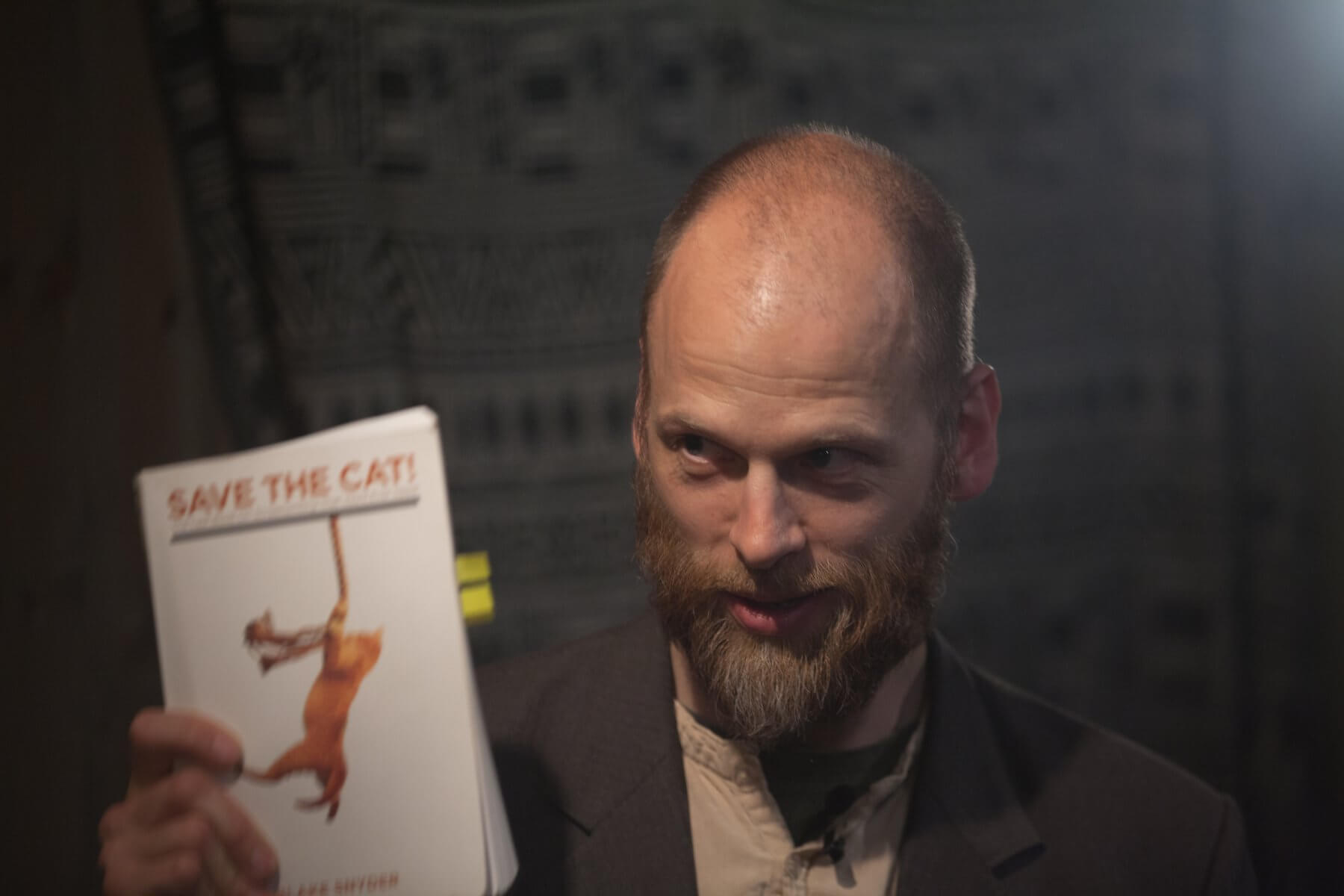
Jan-Ove Tuv.
Primal, primal, primal…
After reading a book, there’s often some phrases that get stuck in one’s mind. The words that got stuck with Tuv after reading Snyder’s book were: “primal, primal, primal.”
What does Snyder say about the primal and how is that related to storytelling?
– If a caveman doesn’t understand it, it’s not worth anything, says Hivju.
The main character’s goal has to be primal, he continues. It has to be about revenge, saving your family, finding love — things that a caveman can relate to.
– It’s not like throughout the last seventy thousand years of history, the humans have developed, developed, and developed, and now we’re in this fine high-tech community, and now we understand the world and each other in a different way. We are exactly the same. We have the same urges, the same instincts, the same dreams, and if we manage to connect with that, we can connect with all of humanity, Kristofer Hivju says.
If a caveman watched the movie Titanic, Hivju is convinced he would understand it. The plot is simple: “Boy meets girl, ship goes down, they’re trying to save their life.”
– How’s the business?
Hivju pulls up a 20 dollar bill from his pocket to illustrate the ways of the Hollywood industry. As a young actor in the U.S. he often heard people asking: “How’s the business?”
At first, he found the underlying attitude cynical, but later he realised the benefits of a money-driven industry: When the industry – the business – is focused on reaching big audiences, they need to trigger an emotional response with everybody. Now that the movie business has become so global, they have to relate to people from all kinds of cultures – from Finland to Nicaragua.
The economic focus results in the search for an eternal human language.
– It’s about how to push the right buttons at the right time, and tell a story as effectively and emotionally intriguing as possible. That’s when it has to be primal, and that’s when you have to build up the story in a way that creates tension, that gives attention, and gives a story of a hero going through a change, says Hivju.
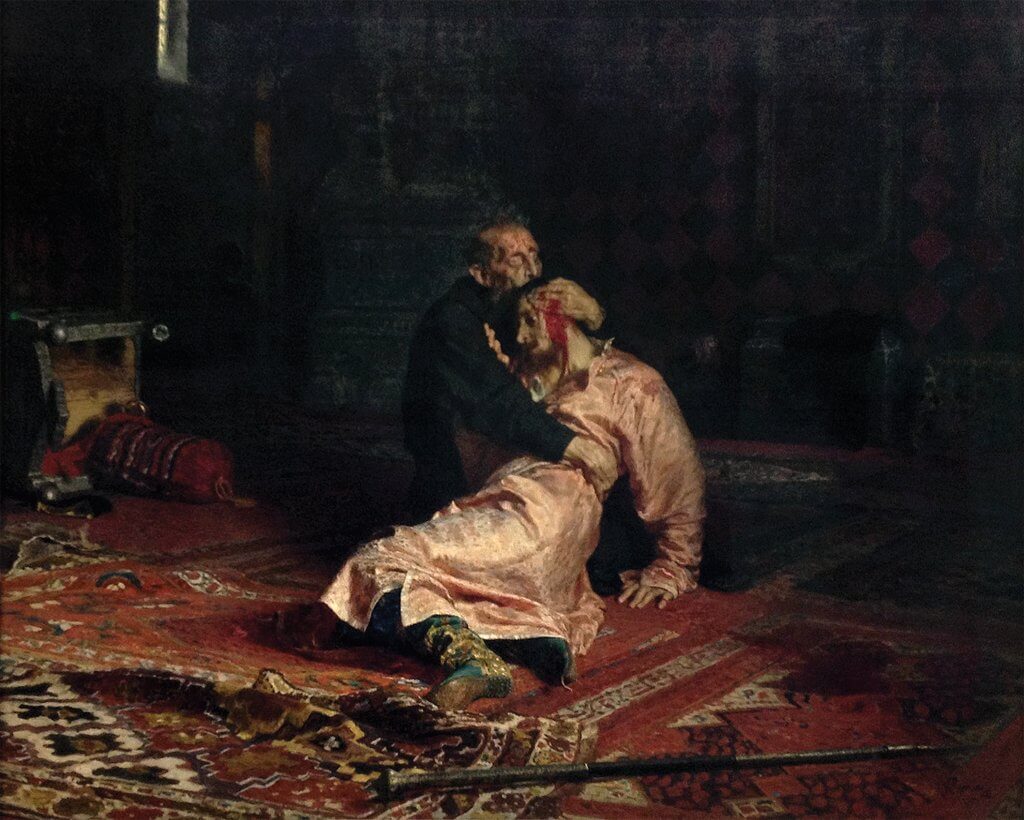
“Ivan the Terrible Killing his Son” by Ilya Repin
Ivan the Terrible
A good story has its own anatomy, Hivju states: – If you’re creating an airplane, you need wings and an engine. If you go back to the Greek dramas, they’re based on the same principles as modern Hollywood blockbusters.
Tuv points out that Ilya Repin’s painting Ivan the Terrible and His Son Ivan includes all the components listed by Snyder and Aristotle.
– There’s a lot of questions in that picture, Hivju adds.
Questions about what has led up to the murder. Questions about what will follow. There is a whole story in the picture.
Hivju explains how movies are sort of advanced comics, because a movie consists of thousands of pictures put together to tell a story. For a painting, on the other hand, it is different:
– For you as painters, you have one frame. One frame!, he exclaims, pointing out the challenge of telling a story with a beginning, a middle, and an end — in one painting.
Hivju explains how Ivan the Terrible, after having killed his son, is so remorseful that you feel compassionate with him.
– If you’re going to say something about storytelling, it’s all about change. And life is about change, and our ability to change, and hopefully become better human beings.
Ivan the Terrible is in the middle of going from anger to sorrow and to regret.
– What we are looking at in that picture is change!, exclaims Hivju.
Being “Deep” as a Byproduct
In the foreword to the Poetics edition referenced, the translator claims that to Aristotle, «universals» is just a byproduct of wanting to create an effective plot. In other words, making “deep” movies is not a result of attempting to be “deep.”
This reminds Tuv of the Taoist teaching of non-forcing, which he discussed with the Chinese painter Cheng Wu in an earlier episode of the Cave of Apelles.
Hivju follows up on the strive towards an effective plot, saying that when writing for screen, you start with the basics, which feels very simple. The depth comes, he argues, when you have done the work, and the composition, and the structure, and when the character behaves in the right way.
– Then, in the end, you can reach a moment of catharsis and you can make the audience cry, or laugh, or understand that this man or woman went through horrendously much work to achieve something, to save his family, or to revenge – and understood something in the end that created change in him. And he was brave enough to change.
Tuv points to Aristotle, who argued that there was a certain order to the effects of how stories can improve our morals:
– When we are gripped, we get an emotional response, then we understand, and then our morals improve – hopefully.
– You have to experience moral or new truths through actions. Through people making choices, adds Hivju.
– In short: Life is movement, conflict, and growth, says Tuv in conclusion.
This article was first published at the Herland Report.
Published on Saturday, July 25th, 2020
